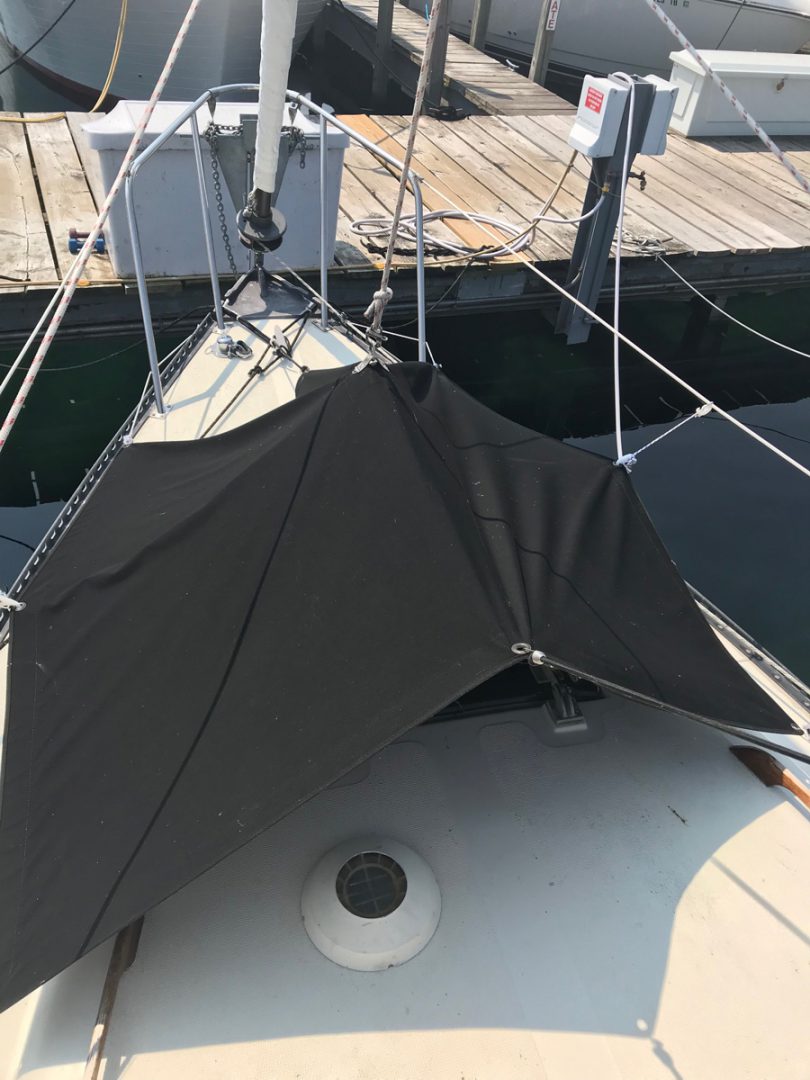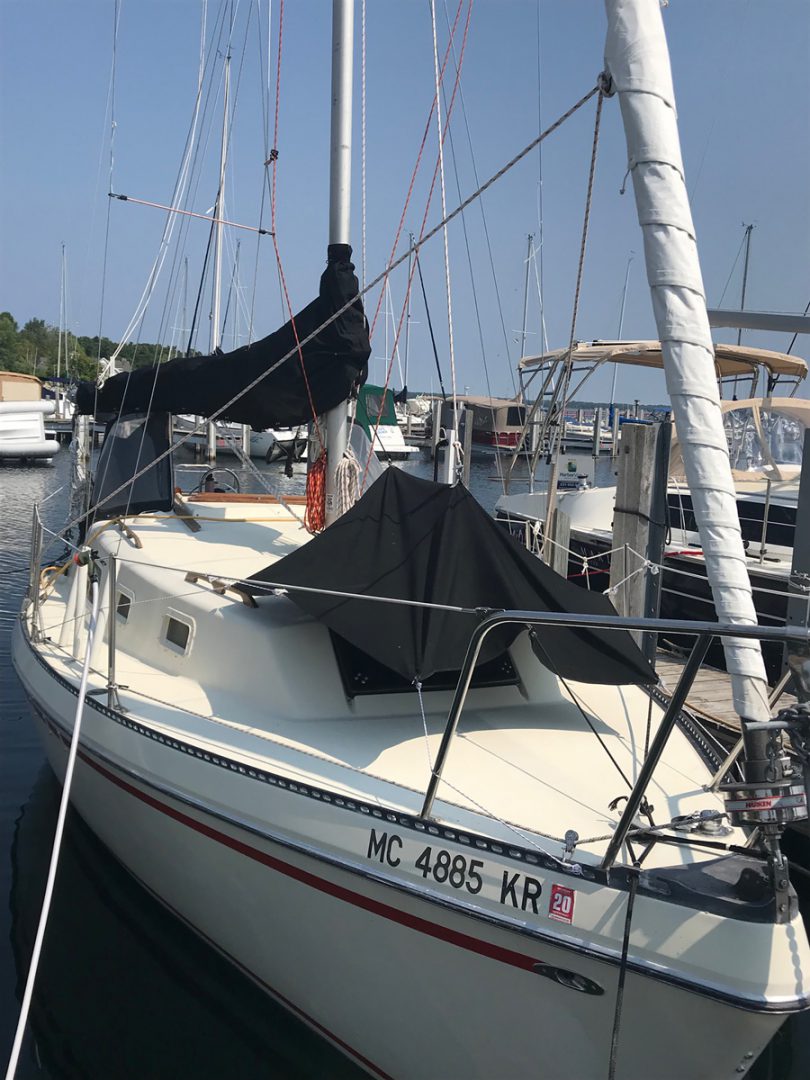 You just docked after a nice sail. The weather is warm. The plan is to grab a bite to eat at a local restaurant. You leave the forehatch open wide to let the boat air out a bit. About halfway through your meal, the rain begins! You begin to race back to the boat, images of a soggy V-berth and bedding pushing your legs faster and then . . . you stop . . . and you smile, because you remember that you have a hatch tent.
You just docked after a nice sail. The weather is warm. The plan is to grab a bite to eat at a local restaurant. You leave the forehatch open wide to let the boat air out a bit. About halfway through your meal, the rain begins! You begin to race back to the boat, images of a soggy V-berth and bedding pushing your legs faster and then . . . you stop . . . and you smile, because you remember that you have a hatch tent.
The accompanying pics show our hatch tent in its deployed position. It is suspended from a jib or spinnaker halyard and attached at eight different points by bungee cords. Basic dimensions are: length to be 65 percent of the distance from the mast to the bow, width to be 75 percent of the beam measured aft of the fore hatch.
We made ours from marine-grade canvas and installed eight grommets, one in each corner and four more, one on each side, evenly spaced between the corner grommets. We also attached a medium-sized D-ring to the middle of the tent fabric; this is where we attach a halyard to support the hatch tent.
To deploy the hatch tent, use the attachment points you have aboard. We attach a bungee from the middle grommet, in the after end of the tent, to the whisker pole anchor on the mast. From the middle-forward grommet, we attach a bungee to either the bow cleat or the base of our forestay. We attach the two forward corners and two aft corners to our toerail, but stanchion bases would work as well. Next, we fasten the two mid-point grommets to adjacent lifelines before using a halyard to raise the center of the tent, forming a pitched roof.

And that’s it! Our hatch tent is protection from unexpected rain, hot and sunny weather, and the prying eyes of dock walkers when we’re in a marina. We have been using our hatch tent on Sundew for several seasons and find it’s almost like air conditioning, only we don’t have to plug it in. It keeps us cool, dry, and ventilated in nearly all weather!
For another, more comprehensive look at a hatch tent solution, see Don Casey’s “A Rain-Defeating Hatch Hood,” in the July 2012 issue of Good Old Boat magazine.




